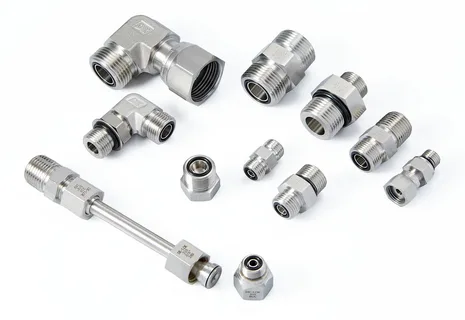Choosing the right tubing for industrial use so as to ensure smooth running and reliability of the tubing: Thus, it became increasingly popular because, thanks to the increased performance and quality, it replaced the outdated DK tubing with the Lok tubing. The problem with this particular application is that choosing the best dk lok tubing for your needs may be a challenge at times. Here are the five most important tips you’ll discover in this post to help you make informed decisions toward selecting DK-Lok tubing for your projects.
1. Understand Your Application Requirements
It’s critical to comprehend your application requirements before beginning the selecting procedure. Making the appropriate decision when selecting DK-Lok tubing will be based on this understanding.
The first criterion to consider is the function of the application, if you get preoccupied with how it looks, start with that. Is the work you are doing, involving exposure with chemicals that are corrosive, high pressure systems or high temperatures? What kind of tubing you will need will depend on each of these factors.
2. Consider the Material Composition
The longevity in addition to performance of DK-Lok tubing are significantly influenced by the material composition of the product. Different materials have different qualities that suit them for particular uses. Selecting a material that complies with the specifications of your project is crucial.
DK-Lok tubing is produced using copper, stainless steel and other variants and alloys from time to time. In many industries for example, using stainless steel material is ideal since they boast of excellent strength as well as resistance to corrosion. On the other hand for copper it has a high thermal conductivity making it common in the air conditioning and heating systems.
3. Evaluate Size and Dimensional Accuracy
When choosing the ideal DK-Lok tubing for your application, it’s important to make sure the dimensions are accurate and to select the suitable size. The best flow rates, pressure handling, and overall system efficiency are ensured by proper sizing.First, ascertain the inner diameter (ID) along with outer diameter (OD) of the tube that are needed. Both connection compatibility and flow capacity will be impacted by these parameters.
4. Assess Pressure and Temperature Ratings
It’s important to make sure the pressure and temperature specifications of DK-Lok tubing match the demands of your application by carefully evaluating them. The maximum operational conditions that the tube can function safely and effectively under are indicated by these ratings.
First, figure out the highest pressure your system can handle. This covers any potential pressure spikes or changes in addition to standard operating pressure. To provide yourself a safety margin, use DK-Lok tubing whose pressure rating is comfortably higher than the highest pressure your system can handle.
5. Check for Certifications and Quality Assurance
The last piece of advice for selecting the best DK-Lok tubing is to confirm certifications and quality control procedures. These elements guarantee that the tubing satisfies industry requirements and has undergone thorough testing to guarantee its dependability and performance.
Try to obtain certificates which are issued within your field of applying for. For example, API (American Petroleum Institute) certificates are likely to be useful when you are working in the oil and or natural gas industry. It could be useful to adhere to FDA regulation for application with food and could also include beverages.
Conclusion:
A number of things need to be carefully considered when choosing the optimum DK-Lok tubing for your application. You may make an informed choice by knowing your application’s needs, taking into account the material composition, analyzing size, and looking for certifications as well as quality assurance. Additionally, considering components like the DK-LOK check valve can further enhance your system’s performance and reliability.



